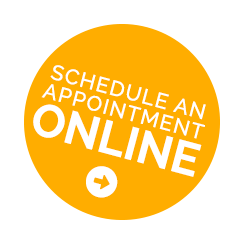Workplace Wellness – Tips to Avoid Desk Job Fatigue in South Amboy NJ

Aching back, stiff neck, strained eyes—it's the usual lineup after a long day at your desk. Spend enough time in one position, and discomfort sneaks up on you. You shift in your chair, roll your shoulders, maybe even stand for a second before sinking back down.
Thing is, doing your best work means staying in front of your computer. That's why coming up with a practical and sustainable solution is a must, chiropractic in South Amboy NJ can help.
What Is Desk Job Fatigue In South Amboy NJ?
Desk job fatigue is that sluggish, mentally drained feeling that settles in after hours of sitting. It doesn't hit all at once—it builds up gradually. You might not even notice until you stand up and realize your body feels like it's been turned to stone.
Symptoms include:
- Persistent tiredness, even if you're not physically exerting yourself
- Back pain, especially in the lower back
- Stiffness in your neck and shoulders
- Eye strain or headaches from too much screen time
- Slower focus and mental fog that make tasks take longer
WHAT'S CAUSING IT?
- Sitting for long periods without movement
- Poor posture (think hunched shoulders and craned neck)
- An awkward workspace setup that forces strain
- Not enough hydration or the right fuel for energy
- Stress buildup that makes everything feel worse
Good news? You don't have to overhaul your entire routine. A few simple adjustments can make a huge difference.
Ergonomic Workspace Setup
First thing to combat desk job fatigue? Get your setup right.
DESK AND CHAIR ADJUSTMENTS
Make small tweaks to encourage posture improvement at work and reduce strain:
- Adjust your chair so your feet rest flat on the floor (or on a footrest).
- Keep your knees level with or slightly below your hips.
- Position your monitor at eye level to prevent slouching.
- Make sure your arms are at a comfortable 90-degree angle when typing.
ERGONOMIC ACCESSORIES
The right tools make a difference:
- Use a lumbar support cushion to maintain your spine's natural curve.
- Swap out your keyboard and mouse for ergonomic versions that reduce wrist strain.
LIGHTING AND ENVIRONMENT
A well-lit, clutter-free space is also important. Here are some tips:
- Position your screen to reduce glare and avoid eye strain.
- Use warm, indirect lighting rather than harsh overhead fluorescents.
- Keep your desk tidy—less clutter means less stress.
Posture and Movement Tips
Another way to overcome desk job fatigue is to keep your body engaged. This doesn't mean you need to deadlift at your desk or start doing sprints in the hallway—just find simple ways to avoid staying stuck in one position.
IMPORTANCE OF GOOD POSTURE
Sitting the right way helps reduce tension and improve energy levels. Keep your back straight, shoulders relaxed, and avoid leaning too far forward or backward. Your head should align with your spine—no craning forward to look at the screen. Good posture makes a massive difference over time.
STRETCHING AND MICRO-BREAKS
Short breaks prevent stiffness and help refresh your focus. Try these:
- Shoulder rolls to release tension.
- Neck stretches—slowly tilt your head side to side.
- Wrist and finger stretches to combat typing fatigue.
- Standing up and lightly shaking out your legs every 30 minutes.
INCORPORATING MOVEMENT
Regular movement keeps your body from locking up. You can make it feel effortless, too:
- Stand up when taking phone calls.
- Walk to a coworker's desk instead of sending an email.
- Use a standing desk or alternate between sitting and standing.
Healthy Lifestyle Habits
Feeling your best starts from the inside out.
HYDRATION AND NUTRITION
You might not be running an ultra-marathon, but your body still needs fuel to function at its very best.
- Keep a water bottle at your desk and sip throughout the day—dehydration can worsen those fatigue symptoms we listed above.
- Don't skip meals. In between, choose energy-boosting snacks like nuts, fruit, or yogurt over processed options.
STRESS MANAGEMENT
Long hours, tight deadlines, never-ending emails, and a growing to-do list—it's no surprise desk jobs can be stressful. The trick is getting the stress under control before it takes a toll on your health.
Try deep breathing exercises to reset your nervous system. Inhale for four counts, hold for four, then exhale for four. Repeat a few times.
A quick mindfulness break also helps—look away from your screen, close your eyes, and focus on the sounds around you for 30 seconds.
Practical Tips and Tools
Building better habits doesn't have to be complicated. Here are some tips to help you stay on track.
TIP 1: SET UP A DAILY ROUTINE
What is the best way to avoid desk job fatigue? Create a routine that includes movement and breaks.
One simple trick is habit stacking. Link a new habit to something you already do. For example, every time you refill your water bottle, take a lap around the office. Or, before checking your inbox, do a quick shoulder stretch.
TIP 2: USE TECHNOLOGY
Even with the best intentions, it's easy to get lost in work. Before you know it, three hours have passed, and you haven't moved an inch.
Apps and wearable devices can help:
- Use reminders to prompt standing breaks or eye rest intervals.
- Try fitness trackers that encourage movement throughout the day.
Get Started Today
Desk job fatigue doesn't have to be the norm. A few smart adjustments can make all the difference.
Start by making one or two small changes today. Your body (and brain) will thank you.
Have you got your own workplace wellness tips? Share them in the comments or tag us on social media.
Want more actionable insights? Check out our resources on workplace wellness tips and ergonomic workspace setup.
OFFICE HOURS
Monday
9:00am - 11:30am
2:30pm - 6:00pm
Tuesday
2:00pm - 6:00pm
Wednesday
9:00am - 11:30am
2:30pm - 6:00pm
Thursday
9:00am - 11:30am
2:30pm - 6:00pm
Friday
Closed
Saturday & Sunday
Closed
Lenahan Chiropractic
837 Upper Main Street
South Amboy, NJ 08879
F: (732) 316-4005


